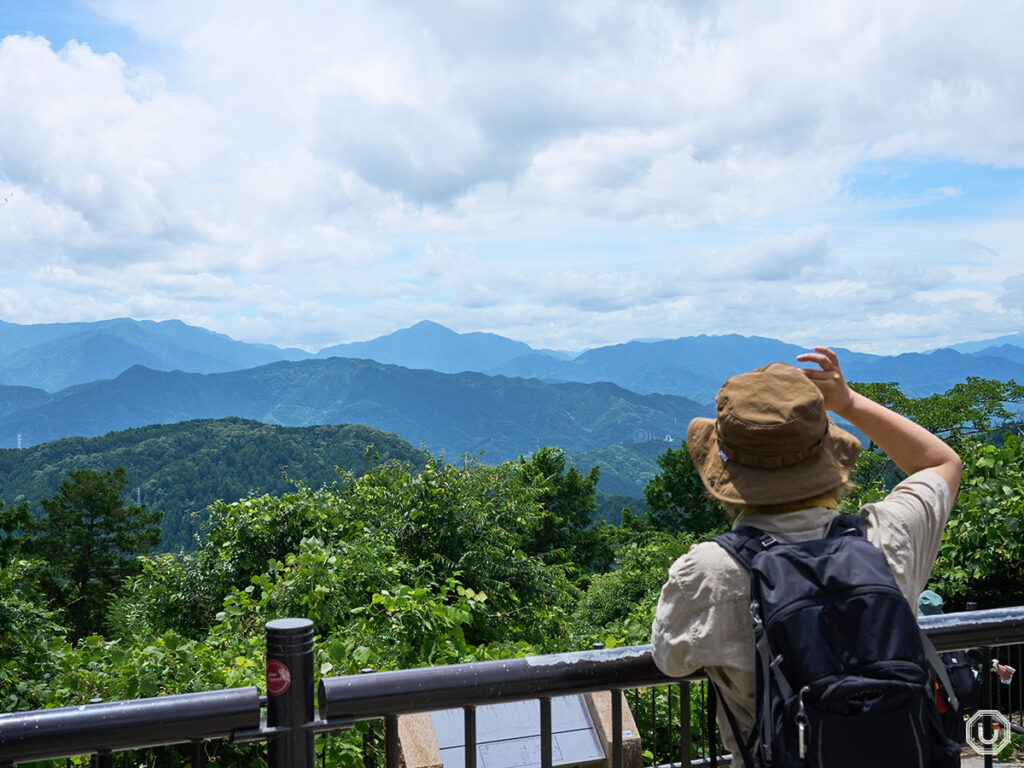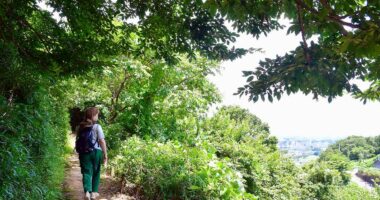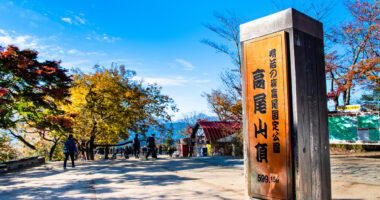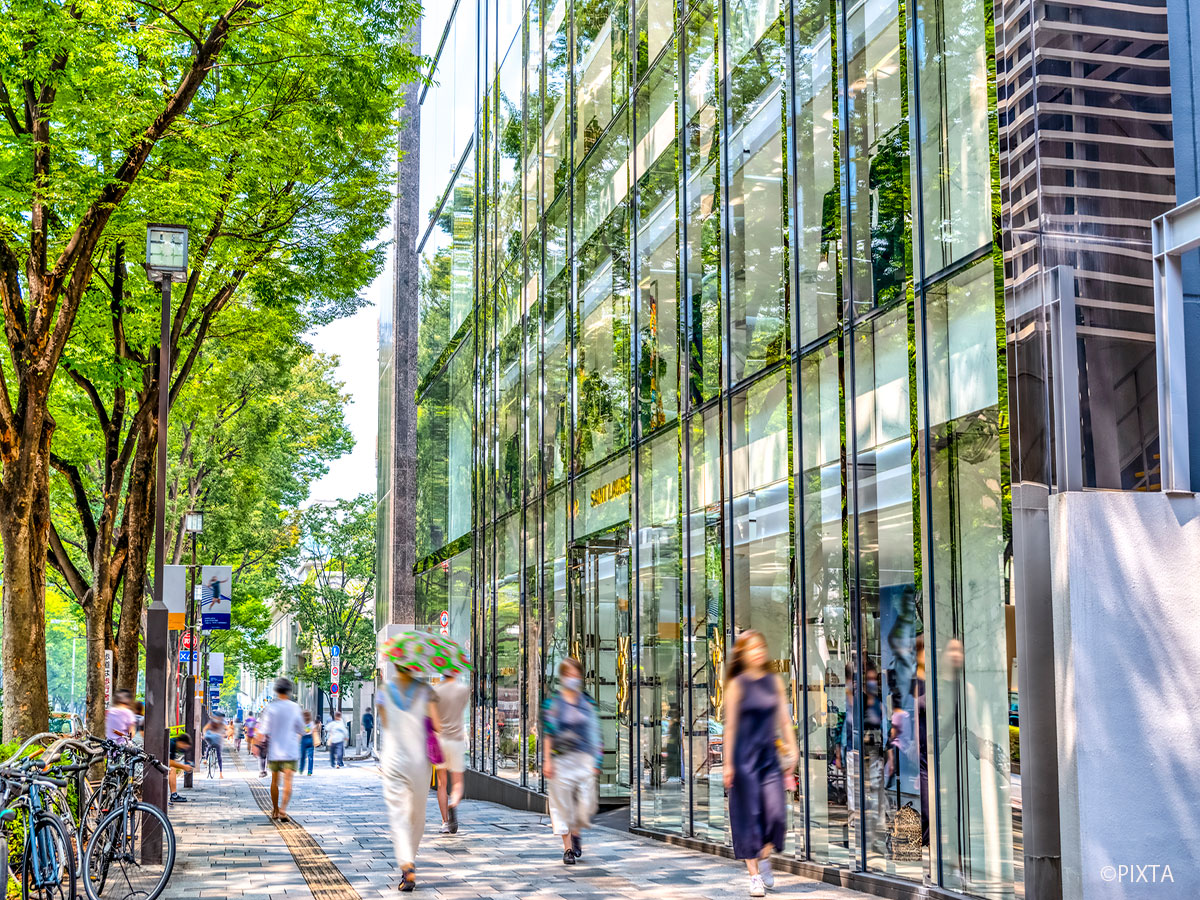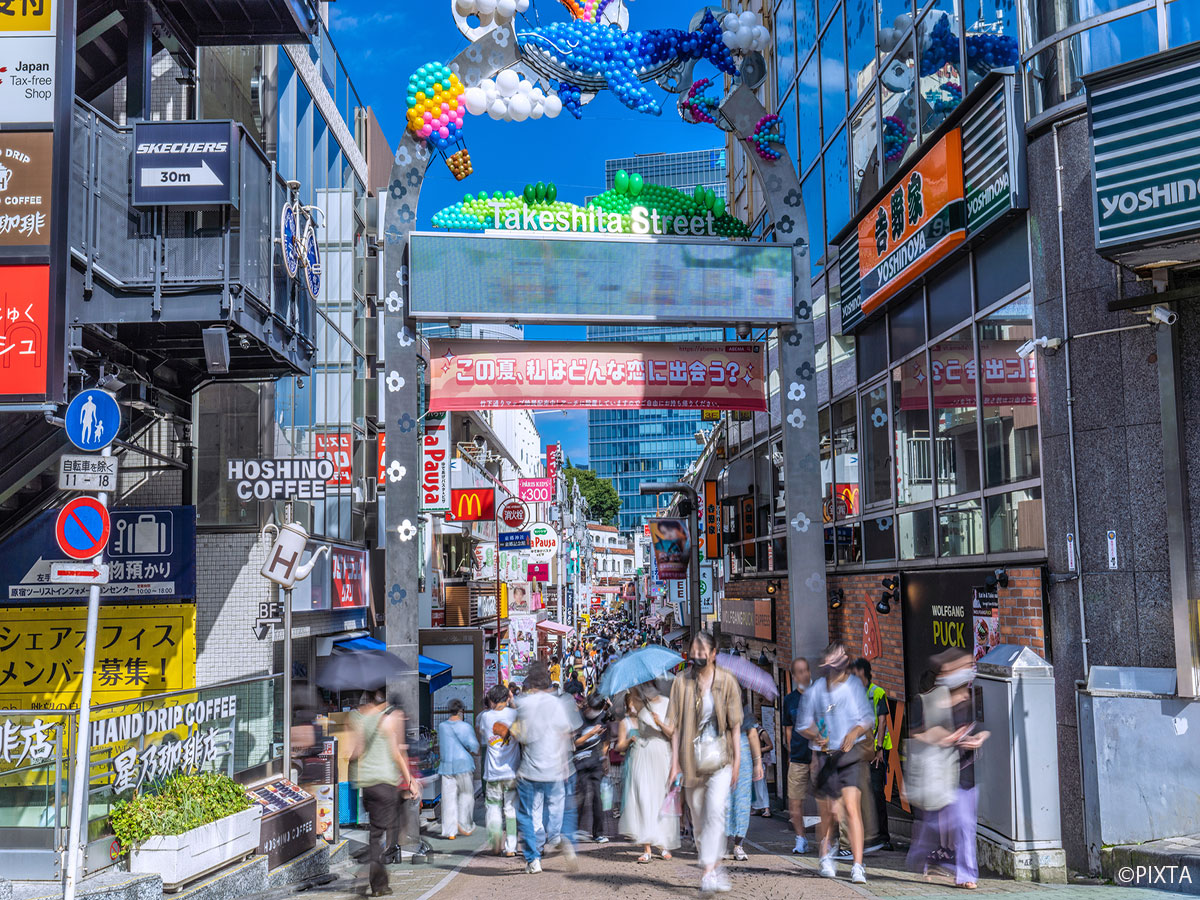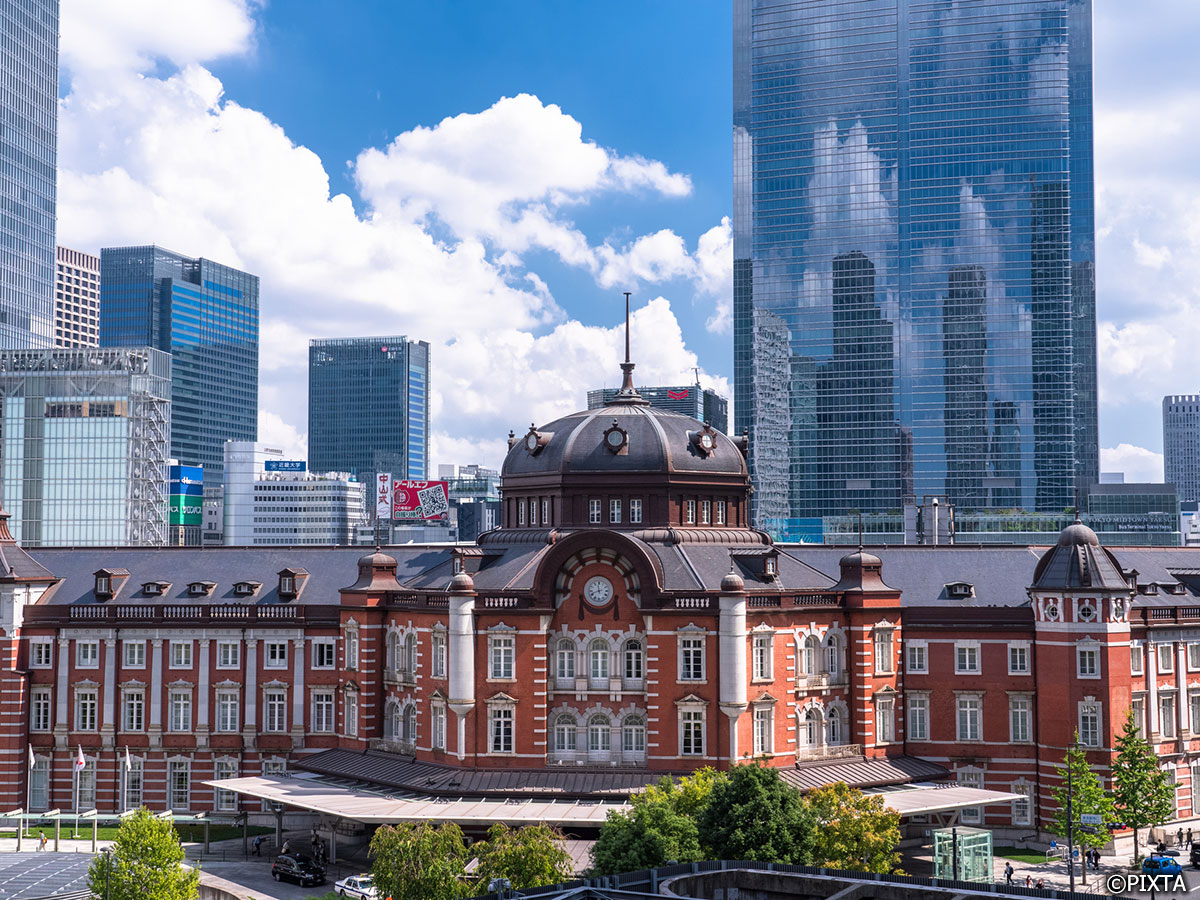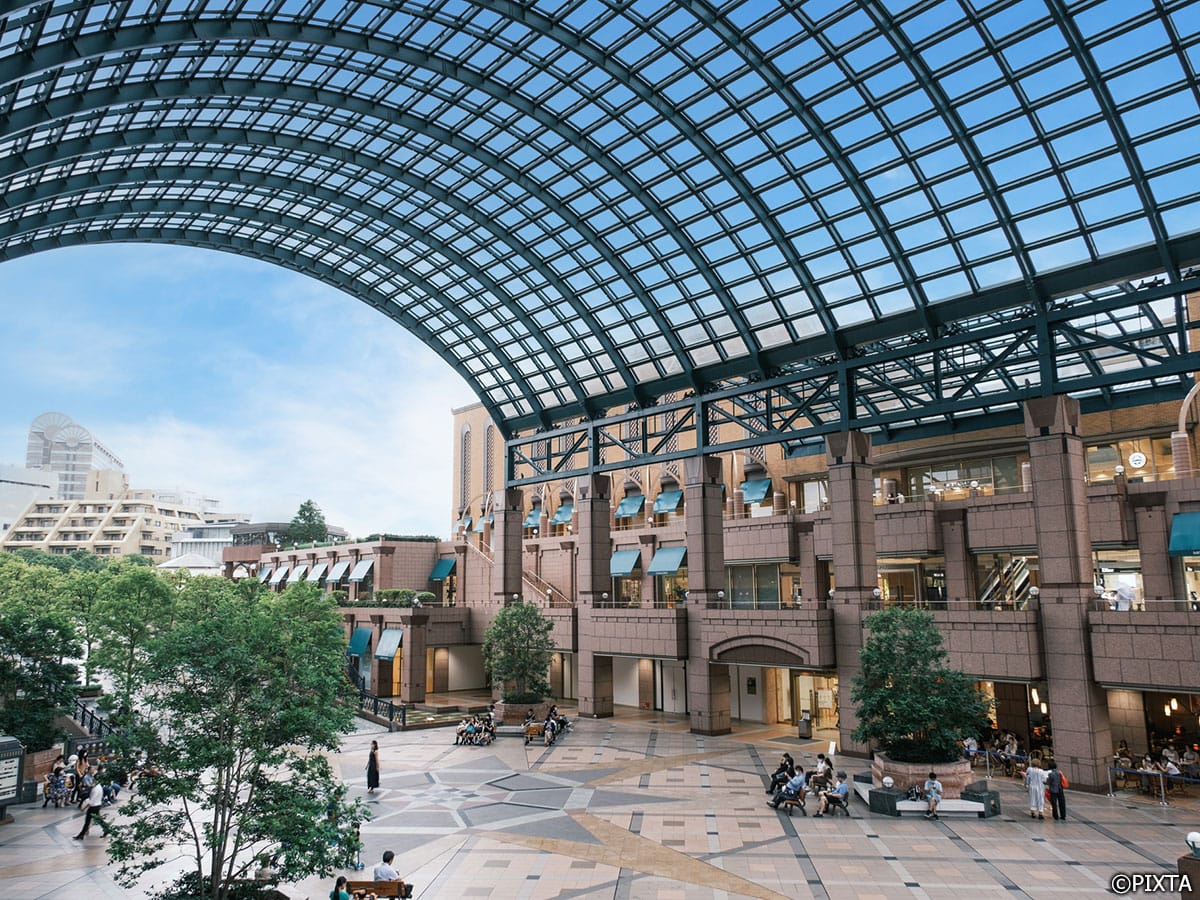When it comes to sightseeing in Tokyo, most people think of delicious food, trendy shops and cafés, and unique museums or theme parks.
While Tokyo certainly overflows with excitement, its appeal isn’t limited to its urban attractions alone.
Just steps away from the bustling city, you’ll find tranquil spots where you can pause, unwind, and immerse yourself in nature.
In recent years, one increasingly popular way to spend time is through shinrin-yoku, or “forest bathing”—a practice of slowing down and walking mindfully through greenery.
Feel the breeze weaving through the trees, take in the earthy scent of the soil, and listen to birdsong. Simply being present in this environment helps you breathe deeper, lift your spirits, and restore balance to both body and mind—an experience that’s gaining popularity with international visitors as a form of wellness travel.
The benefits of forest bathing
Forest bathing is said to offer a range of scientifically backed benefits, such as reducing stress hormones, boosting immunity, and improving concentration.
Simply taking deep breaths in nature can improve circulation and lift your spirits—it almost feels magical.
It’s the perfect activity to step away from the hustle and bustle of the city and hit the reset button for yourself during your travels in Japan.
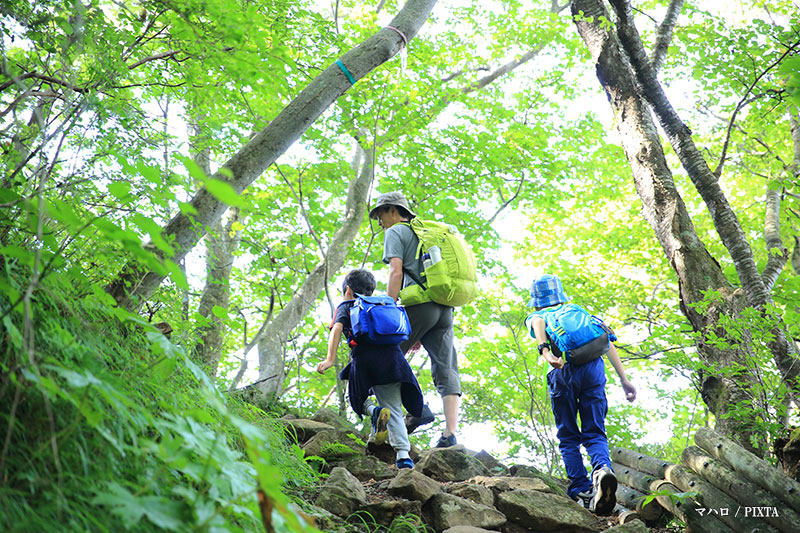
Photo for illustrative purposes
And in Tokyo, you don’t need to travel far—within just one to two hours by train from central areas like Shinjuku or Shibuya, you’ll find plenty of forest oases waiting to be explored.
Though only a day trip from the city, these places offer lush greenery and clear streams that will make you forget you’re still in Tokyo.
Step away from the typical sightseeing routes and discover another side of Tokyo’s charm—its rich natural landscapes.
Mt. Takao: Tokyo’s hidden natural treasure
Special features of Mt. Takao
About an hour by train from Shinjuku in Tokyo, Mt. Takao is a special place where the convenience of the city meets the richness of nature.
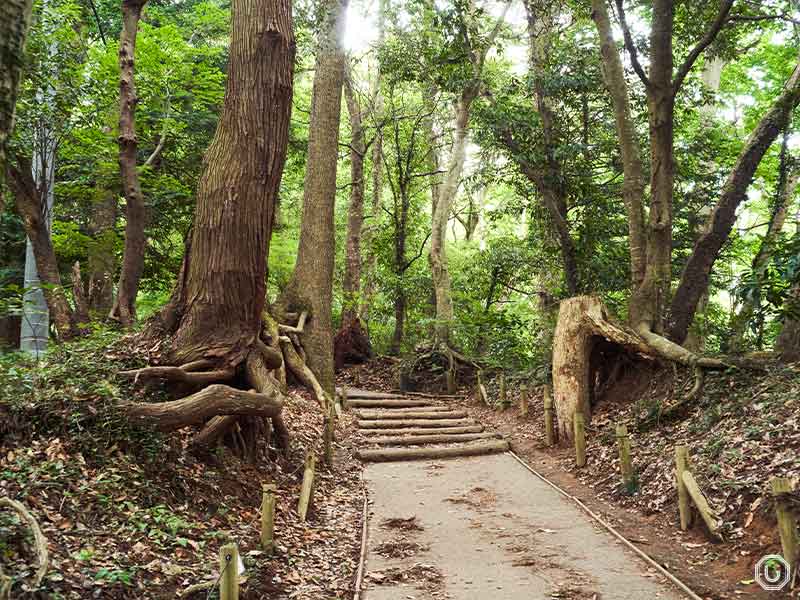
Mountain trail on Mt. Takao
At 599 meters (approximately 1965.22 feet) above sea level, Mt. Takao isn’t particularly tall, but it offers multiple routes to the summit, allowing visitors to choose based on their fitness level and hiking experience.
For beginners or those visiting mainly for sightseeing, the route from Kiyotaki Station using the cable car or chairlift is highly recommended.
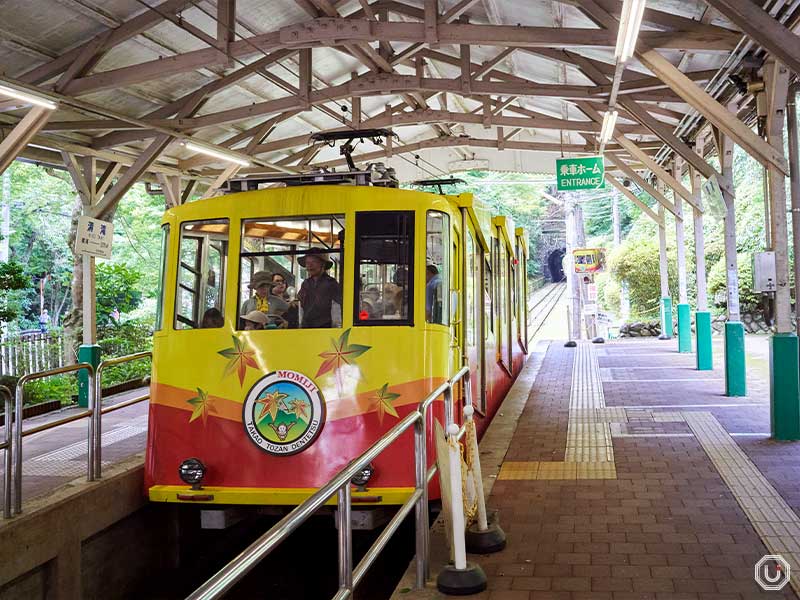
Cable car at Mt. Takao
Kiyotaki Station is about a 3-minute walk from Takaosanguchi Station and accepts cash, transportation IC cards, and contactless credit cards, making it convenient for those who prefer cashless payments.
Along the way to the summit, you’ll find highlights beyond just the forest bathing experience, such as the shop “Takaosan Sumika” offering souvenirs and light snacks, and the historic Takao-san Yakuo-in Temple, known for warding off misfortune and bringing good luck.
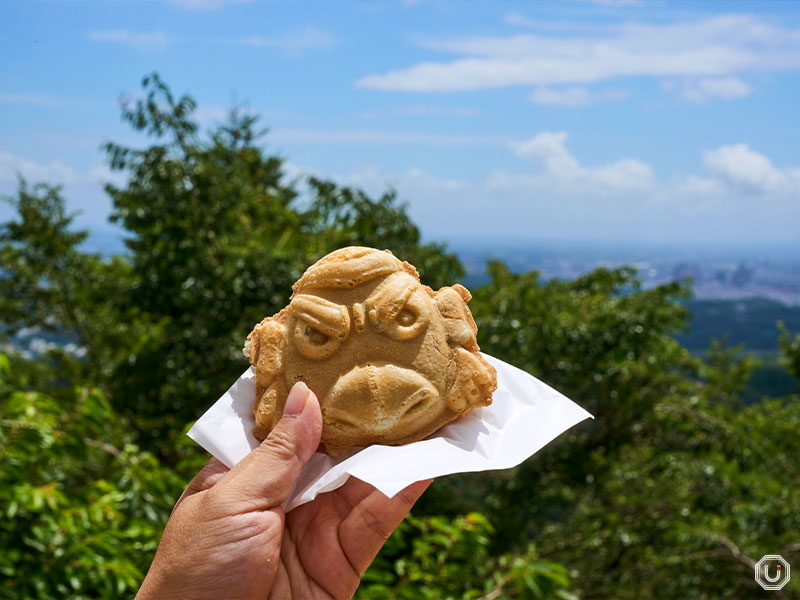
Tenguyaki sold at Takaosan Sumika
Mt. Takao is the perfect spot to relax in nature while also experiencing Japanese culture—a true two-in-one destination.
Recommended clothing and gear
Many of the trails on Mt. Takao are well-maintained, with paved sections, so walking in sneakers is generally fine.
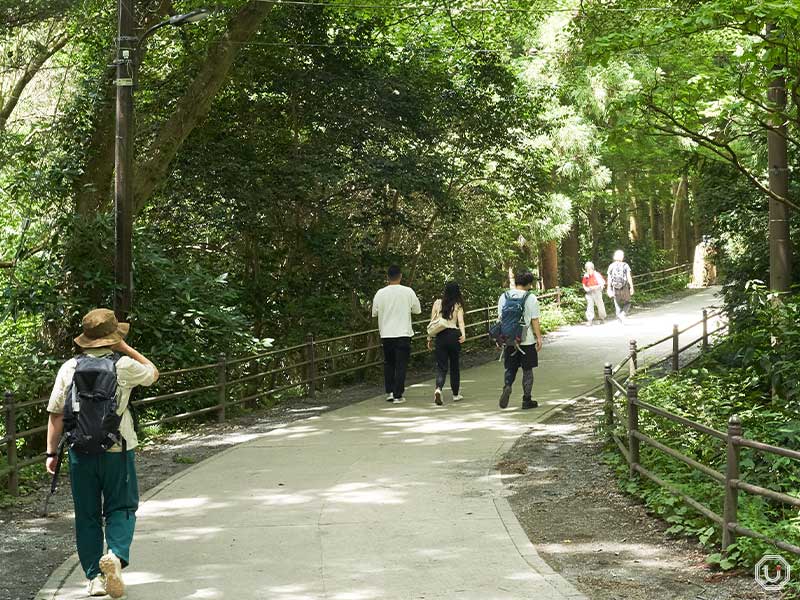
Trail 1, recommended for beginners on Mt. Takao
However, for those who want a more comfortable experience—or on days when the ground is slippery after rain—it’s best to wear non-slip trekking shoes.
Takaosanguchi Station also houses shops selling hiking gear, so you can pick up any necessary items on site.
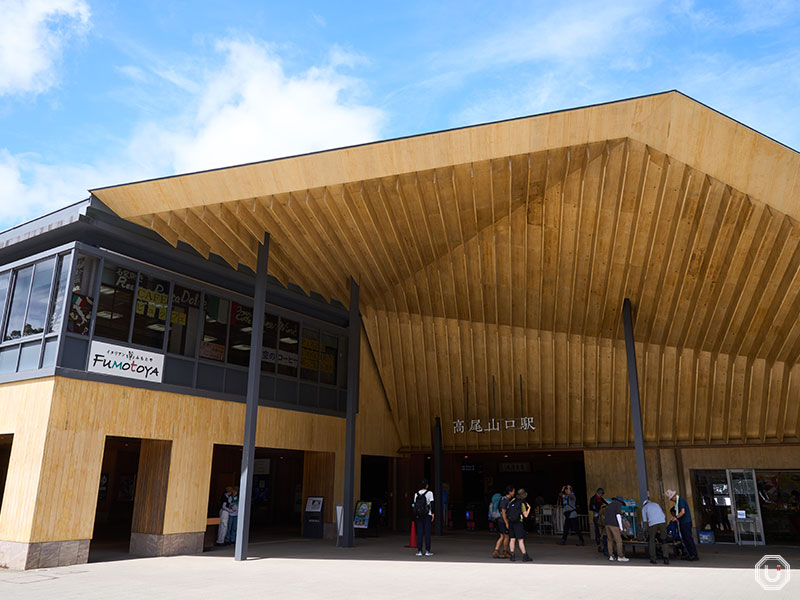
Exterior of Takaosanguchi Station
In fall and winter, temperatures drop as you climb higher, so having a jacket or windbreaker on hand is recommended for added comfort.
Highlights
For first-time visitors to Mt. Takao, the trail you’ll want to start with is “Trail 1.”
This course follows the main ridge from the base to the summit and passes by the historic Takao-san Yakuo-in Temple along the way.
Walking through the forest, you can experience Japanese faith and culture, making it a perfect trail for sightseeing as well.

Exterior of Takao-san Yakuo-in Temple
For those who want to immerse themselves in the tranquility of nature during their trek, “Trail 4” is highly recommended.
This slightly undulating trail is filled with lush greenery and the pleasant sounds of birdsong.
Along the way, you’ll find a suspension bridge that’s a popular photo spot, enhancing the feeling of forest bathing even more.
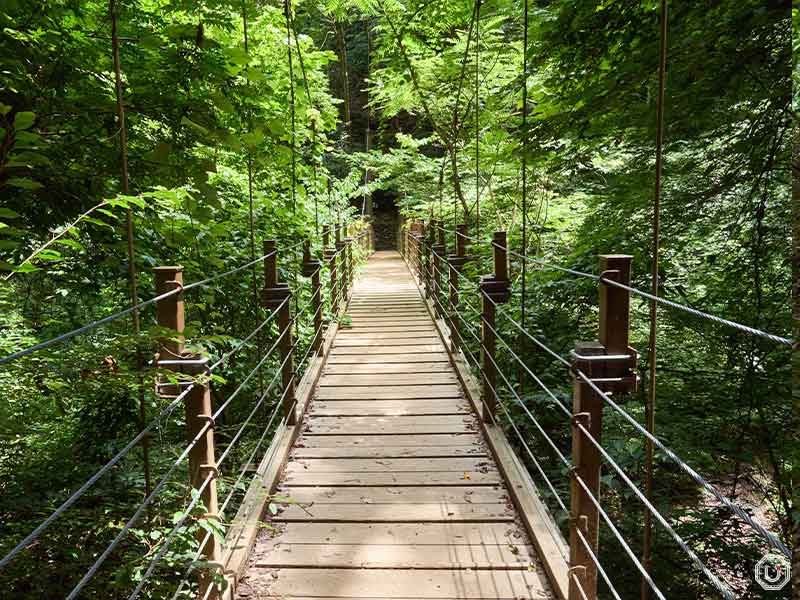
Suspension Bridge on Trail 4, Mt. Takao
The trees, which change in appearance with the seasons, and the crisp, clean air create an experience you won’t easily forget.
Mt. Takao is a mountain full of deep relaxation and discoveries, so much so that it’s hard to believe it’s just a short trip from the city center.
For more detailed information on Mt. Takao, click here.
Mt. Mitake: a spiritual power spot steeped in lore
Special features of Mt. Mitake
Located in Tokyo’s Ome area, Mount Mitake is a historic mountain long revered as a site of mountain worship.
Near the summit stands Musashi Mitake Jinja Shrine, with a history spanning over 1,300 years, and it is also home to some unique legends.
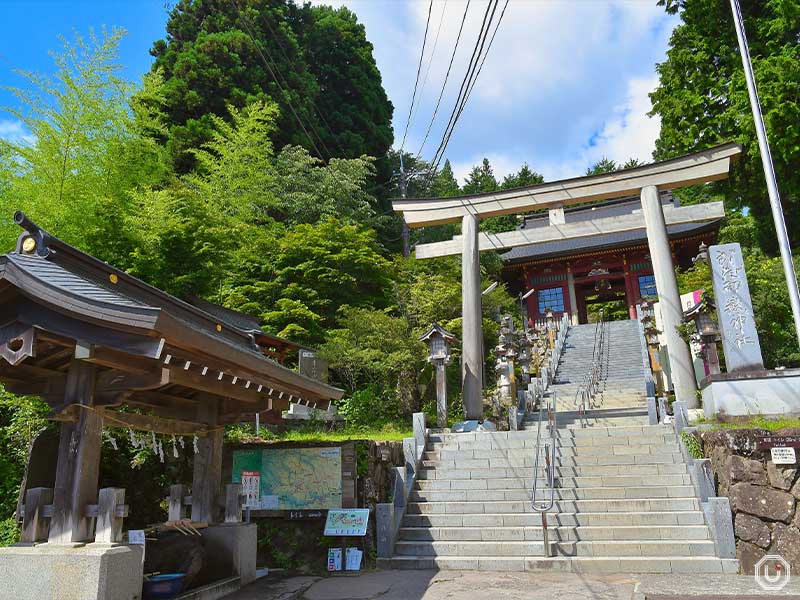
Musashi Mitake Jinja Shrine on Mt. Mitake
According to legend, when the legendary hero Yamato Takeru once lost his way, a white wolf guided him along the path. That wolf was later deified as Ōkuchi no Magami (Great-Mouthed True God).
Since then, dogs have been objects of worship on Mt. Mitake, making Musashi Mitake Jinja Shrine a rare place where visitors can worship together with their beloved pets.

A shrine where you can pay respects with your dog is quite rare
From the grounds of Musashi Mitake Jinja Shrine, you can take in sweeping views of the Kanto Plain, and on clear days, even see distant mountain ranges.
Each visit offers a profound sense of nature’s grandeur and sacredness, making it a place wrapped in a truly mysterious charm.
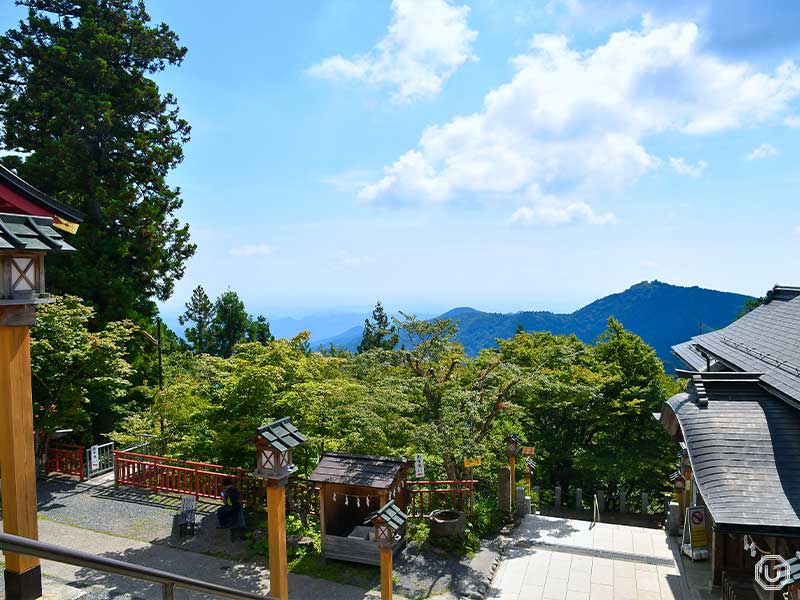
The view from Musashi Mitake Jinja Shrine
Recommended clothing and gear
Many people visit Mt. Mitake specifically to worship at Musashi-Mitake Jinja Shrine.
The typical route to the shrine is to take a bus from Mitake Station to Takimoto Station, then ride the cable car before climbing a steep stone staircase.
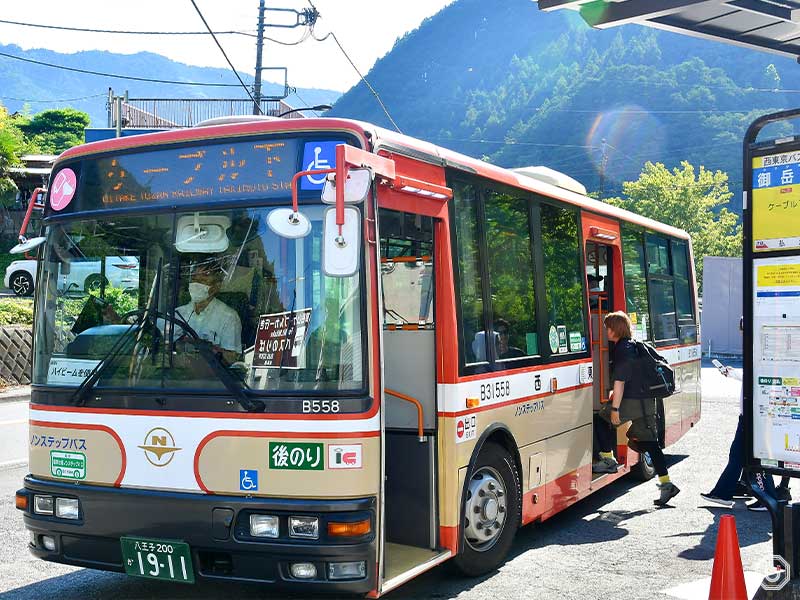
Bus from JR Ome Line Mitake Station to Takimoto Station
The approach is well maintained, so if you are only visiting the shrine, sneakers are fine.
However, since there are some steep sections along the way, it’s best to wear comfortable walking shoes.
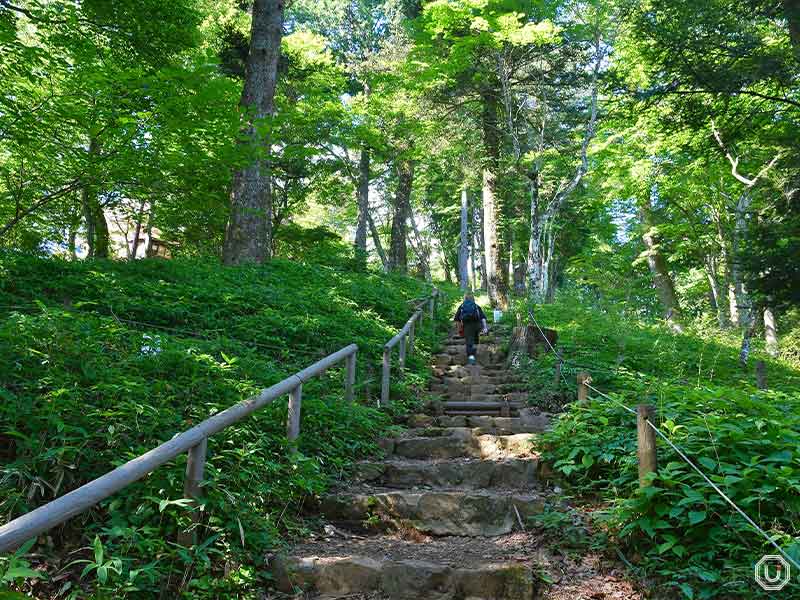
Flower colony of renge shōma (false anemones)
If you plan to hike up Mt. Mitake without using the cable car or bus, or continue past the shrine into the deeper mountain trails, trekking shoes that provide firm ankle support are recommended.
Also, depending on the season and weather, don’t forget to bring a jacket or rain gear.
Highlights
When visiting Mt. Mitake, one spot you won’t want to miss is the area known as the Rock Garden.

Rock Garden on Mt. Mitake
Beyond Nagaodaira, located behind Musashi Mitake Jinja Shrine, you’ll find a tranquil trail that follows a clear mountain stream, surrounded by lush greenery.
In the crisp air, the sound of water flowing between the trees is sure to bring a sense of calm.
Along the way, you’ll come across a massive rock called Tengu-iwa Rock. Climbing it with the help of chains rewards you with sweeping views of greenery below—a spot that offers a touch of adventure.
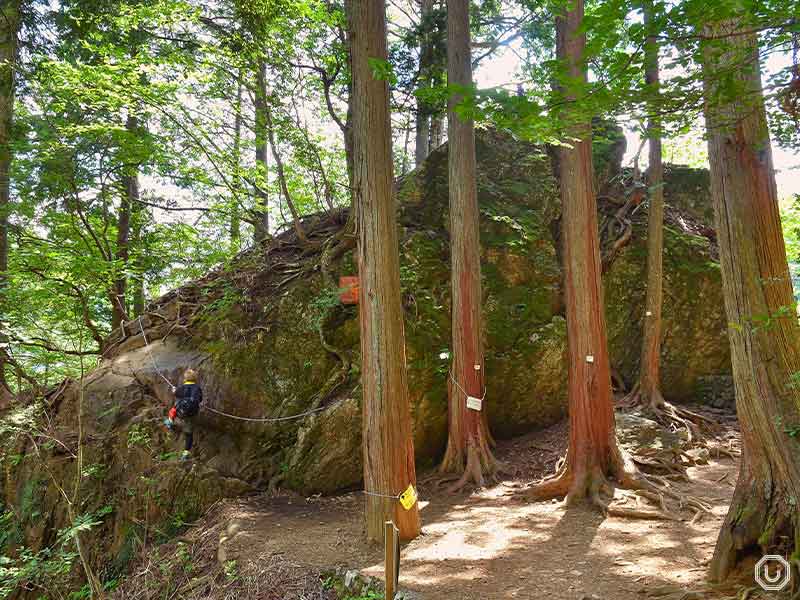
The famous Tengu-iwa Rock on Mt. Mitake
Continue deeper along the trail and you’ll be greeted by Ayahiro Waterfall, a 10-meter (33 feet) cascade.
Once used as a training ground for Musashi Mitake Jinja Shrine, this sacred spot envelops you in cool, refreshing air that feels as if it purifies the heart as well.
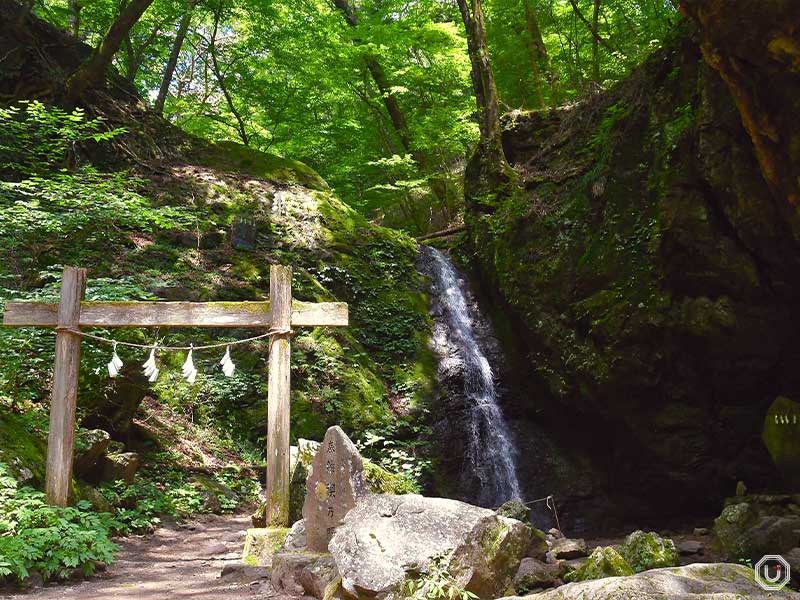
Ayahiro Waterfall on Mt. Mitake
Crossing the stepping stones and wooden bridges of the Rock Garden is sure to spark your sense of adventure.
Mt. Mitake is a sacred forest where nature and mythology, serenity and adventure blend together in perfect harmony—an enchanting place that feels worlds away from Tokyo.
For more detailed information on Mt. Mitake, click here.
Naganuma Park: a hidden gem of tranquility
Special features of Naganuma Park
Just about a 5-minute walk from Naganuma Station on the Keio Line, “Tokyo Metropolitan Naganuma Park” (referred to hereafter as “Naganuma Park”) preserves the natural landscape of the Tama Hills. While it may not have the flashiness of major tourist spots, that’s exactly what makes it a peaceful hidden oasis where you can enjoy a quiet forest bath.
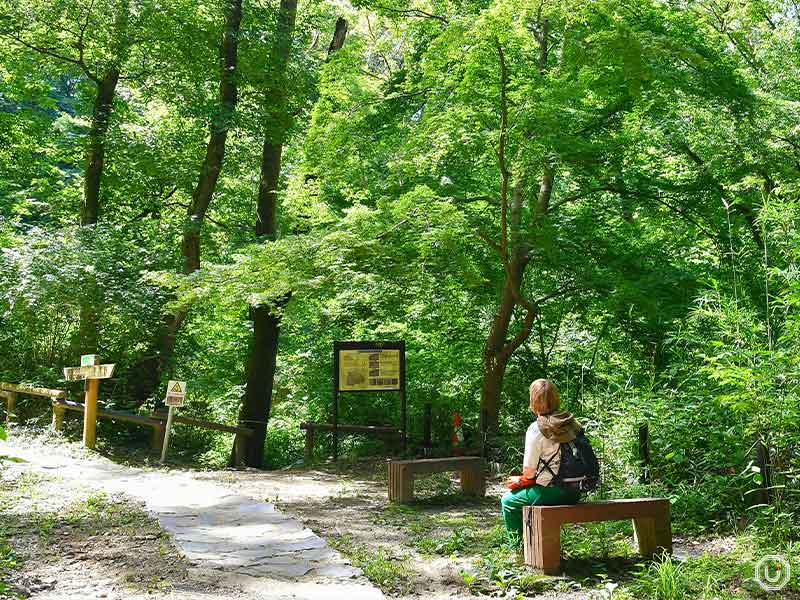
Bench along Kirifuri no Michi at Naganuma Park
Many well-maintained walking paths make Naganuma Park ideal even for those with limited stamina or for first-time visitors looking to experience a forest bath.
In addition to a roughly one-hour loop trail that circles the entire park, there are several ridge paths leading up to the hilltops, allowing you to choose your route freely depending on your mood that day.
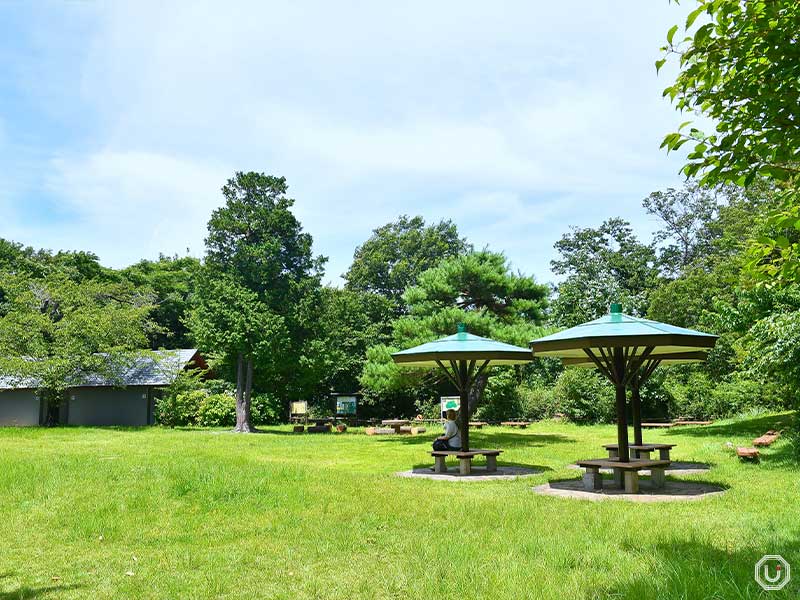
Summit Garden at Naganuma Park
At the hilltop area called the Summit Garden, you’ll find covered benches and well-maintained public restrooms, making it perfect for a mini picnic.
The spacious, open environment is another highlight—taking a deep breath amidst the lush greenery is sure to leave you feeling refreshed.
Additionally, the park is home to wild birds such as Japanese tits and Daurian redstarts, so visitors often enjoy birdwatching with binoculars in hand.
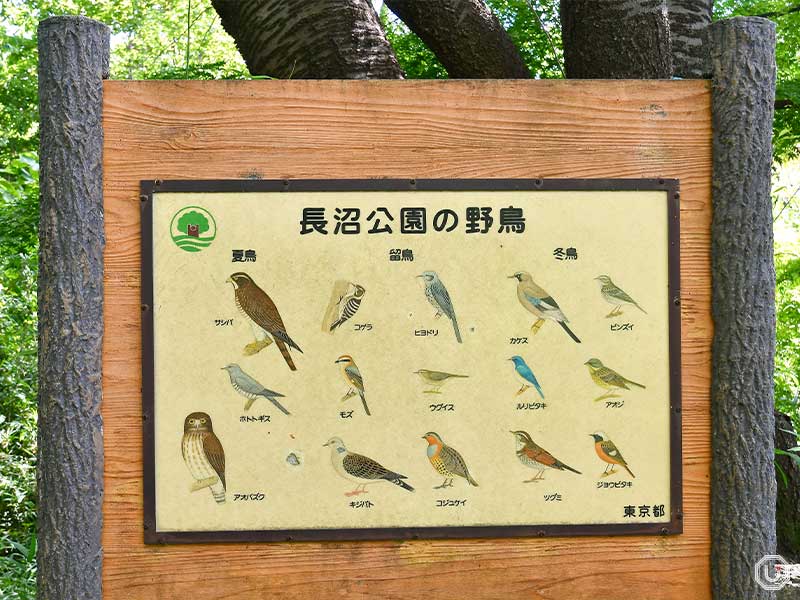
Types of birds at Naganuma Park
Recommended clothing and gear
Most paths in Naganuma Park are paved or relatively gentle natural trails, so a pair of comfortable shoes, such as sneakers, is sufficient.
You don’t need full hiking or trekking boots, but choosing footwear that is slip-resistant and easy on the feet will make your walk more comfortable.
Note that there are no shops or vending machines inside the park, so it’s best to pick up drinks or light snacks near Naganuma Station beforehand.
On a sunny day, bringing a packed lunch and enjoying a leisurely meal on one of the benches is highly recommended.
Highlights
One path you won’t want to miss in Naganuma Park is the Kirifuri no Michi, where seasonal flowers bloom in full splendor.
Plum and cherry blossoms in spring, fresh greenery in early summer, and autumn foliage in fall make this path feel like a natural art gallery that changes with the seasons.
Surrounded by seasonal flowers and trees, you can enjoy a relaxing, tranquil stroll through nature.
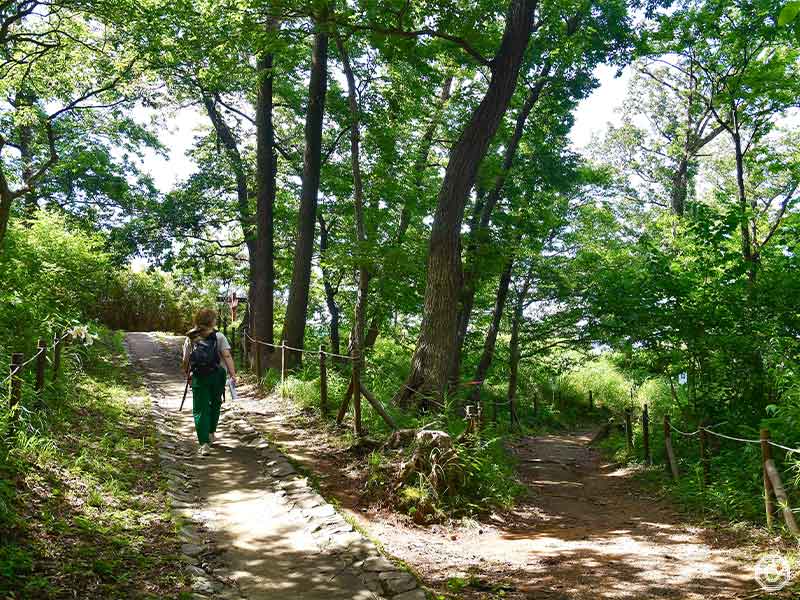
The Kirifuri no Michi in Naganuma Park
For those who want a more active experience, we recommend the Yaen Ridge Trail. This gently undulating ridge path is also popular among trail runners.
The stable footing makes it safe and comfortable for beginner hikers and families with children.
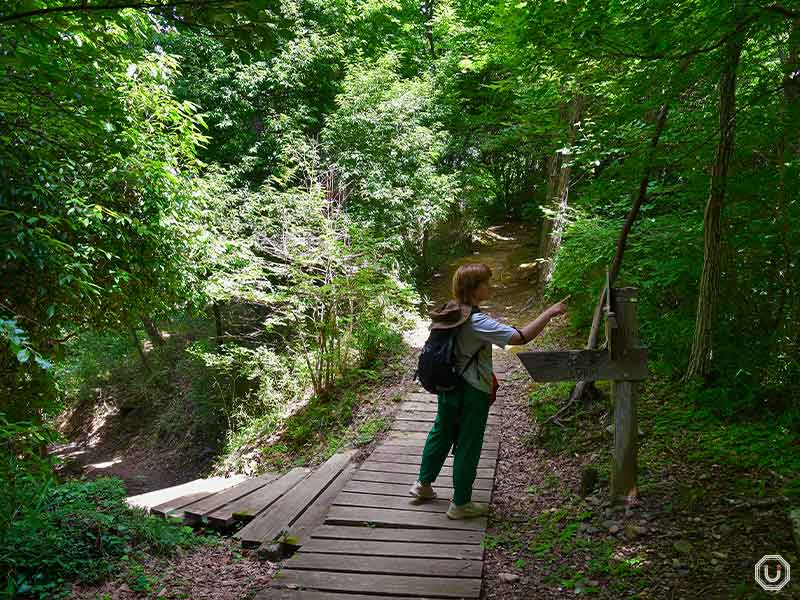
The Yaen Ridge Trail in Naganuma Park
Another path perfect for a spring visit is the “Tonogaya Path.”
This gently sloping trail transforms into a stunning tunnel of cherry blossoms during the season, making for a truly magical walk.
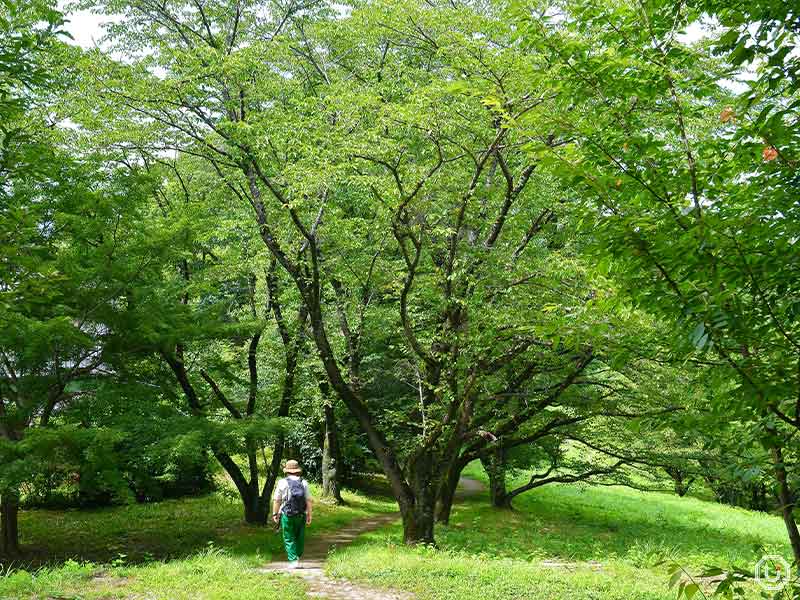
The Tonogaya Path in Naganuma Park
Strolling beneath the arching canopy of blossoms while enjoying forest bathing offers a special experience that makes you forget the hustle and bustle of the city.
Naganuma Park is like a hidden retreat for adults seeking nature and tranquility. It may not be flashy, but it’s a place that quietly restores your mind and spirit.
For more detailed information on Naganuma Park, click here.
Yoyogi Park: a green oasis in the heart of Tokyo
Special features of Yoyogi Park
Located in the Shibuya and Harajuku area, Yoyogi Park is surrounded by lush greenery that invites deep breaths, making it one of Tokyo’s most accessible spots for forest bathing.
The main entrance, Harajuku Gate, is just a 3-minute walk from JR Harajuku Station, allowing you to easily drop by between shopping trips or after a café crawl.
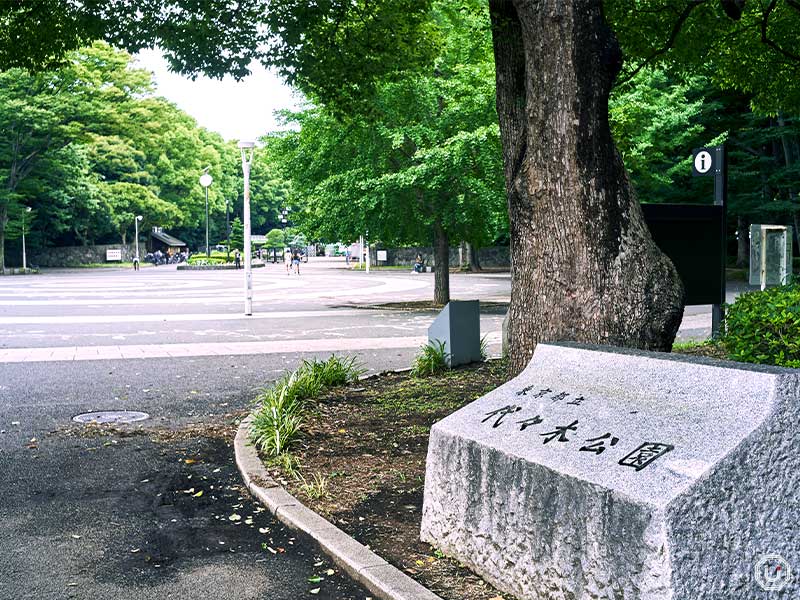
Harajuku Gate, the main entrance to Yoyogi Park
Adjacent to the park is Meiji Jingu shrine, offering a unique setting where you can enjoy two very different types of nature at once: a historic, sacred forest and a modern urban park.
Near the entrance, the National Olympic Memorial Youth Center bursts with seasonal flowers in full bloom, delighting the eyes of visitors.
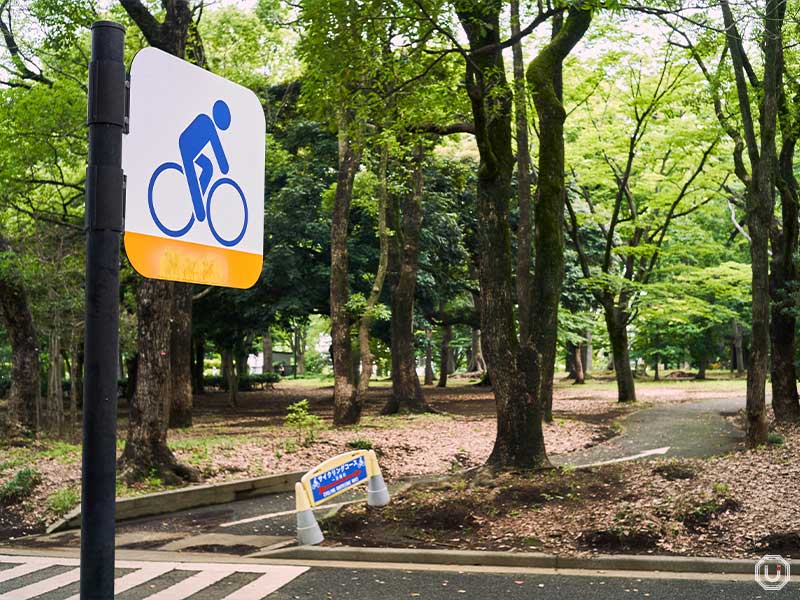
Signage for the cycling course
On the northern side of the park, a dedicated cycling course allows you to ride through a refreshing tunnel of greenery.
At the park’s Cycling Center, bicycles can be rented for just 210 JPY (tax included) per hour, with tandem bikes also available.
Even in the heart of the city, this is a spot where you can enjoy a moment feeling the natural breeze.
Recommended clothing and gear
Most of Yoyogi Park is flat terrain with wide paths, making it easy and comfortable to walk without any special gear.
If you’re stopping by during sightseeing, your regular sneakers and casual clothes are perfectly fine.
However, if you plan to explore the park’s wooded areas at the back, where dirt paths and exposed tree roots can be found, it’s best to wear comfortable sneakers or low-heeled shoes.
Bringing a picnic sheet and drinks allows you to relax and enjoy some downtime in the expansive Central Plaza at the heart of the park.
Highlights
If you want to fully enjoy the natural side of Yoyogi Park, start by visiting the area called the Hill Plaza, located west of the National Olympic Memorial Youth Center.
In spring, cherry blossoms; in summer, fresh greenery; in autumn, vibrant fall colors; and in winter, crisp clear air—this spot offers a different scene each season.
Spring cherry blossoms are especially stunning, making it one of Tokyo’s top hanami (cherry blossom viewing) spots, attracting crowds in March and April.
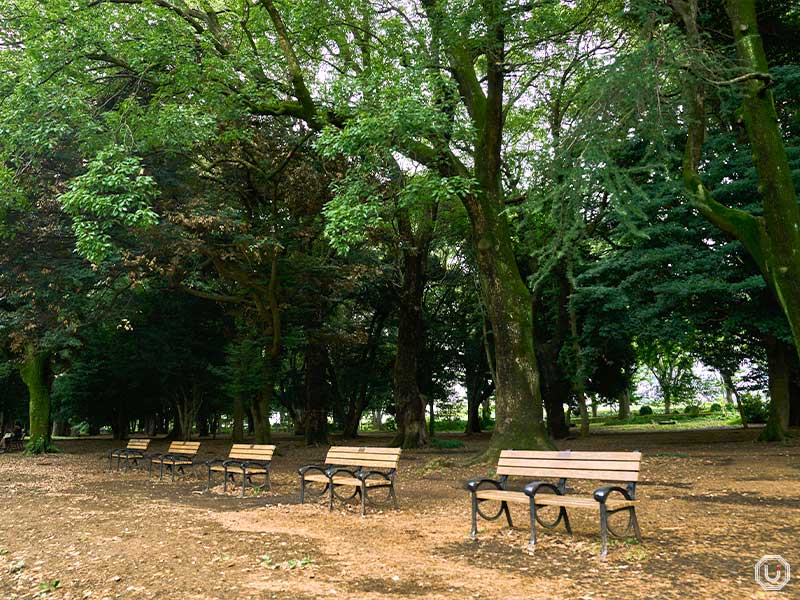
The Hill Plaza in Yoyogi Park
Continuing past the Hill Plaza, you’ll arrive at the Tree Grove, where nature has been left largely untouched.
The terrain features small hills and gentle slopes, and beyond the unpaved dirt paths awaits a quiet forest lined with trees over 50 years old.
The serene stillness of this wooded area feels like a secret forest hideaway right in the middle of the city.
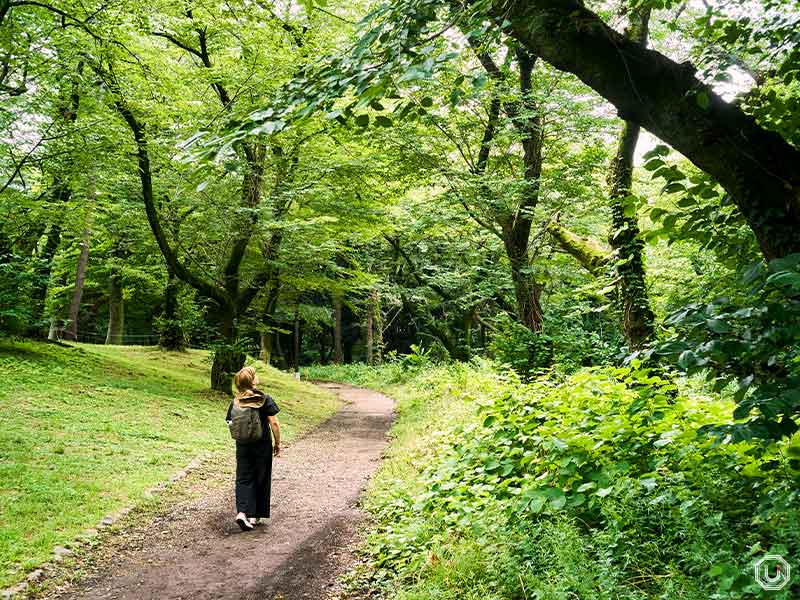
The Tree Grove in Yoyogi Park
Then there’s the expansive lawn of the Central Plaza, a perfect spot if you want to combine forest bathing with a picnic.
Visitors spread out blankets to chat, read, or simply lie back and gaze at the sky—everyone enjoying their time in their own way.
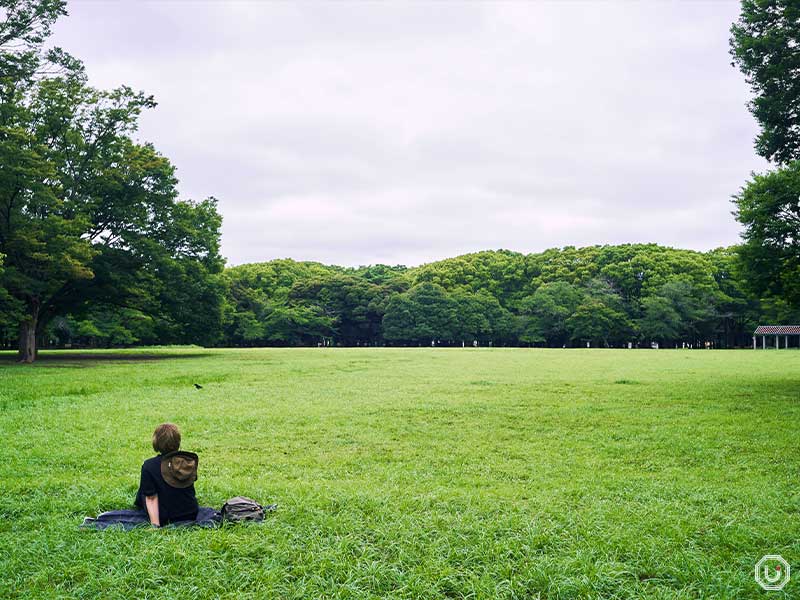
Central Plaza in Yoyogi Park
For more detailed information on Yoyogi Park, click here.
All four of the spots introduced here are within day-trip distance from central Tokyo. They’re perfect for a short visit between sightseeing, or for spending a full, relaxing day immersed in nature.
Find the forest-bathing experience in Tokyo that fits your pace and travel style.
Forest bathing spots comparison chart
Worried about your stamina or needing English guidance? This comparison table lets you check everything beforehand for peace of mind.
| Spot | Estimated Time | Difficulty | Foreign Language Support |
|---|---|---|---|
| Mt. Takao | 1–4 hours (varies by route) | ★★☆☆☆ (varies by route) | English course maps available |
| Mt. Mitake | 1–3 hours (depends on use of cable car) | ★★★☆☆ | English area maps available |
| Naganuma Park | 1–2 hours | ★☆☆☆☆ | Park map only in Japanese. Available on the official site |
| Yoyogi Park | 30 min–2 hours | ★★★☆☆ | On-site signs with translation in English, Chinese, and Korean. Maps in English, Chinese, and Korean available on the official site |
Another side of Tokyo’s charm lies in connecting with the nature surrounding it. Slip on a pair of sneakers and take a walk through the forest—you’re sure to discover new sights and enjoy a quiet, rejuvenating moment.
※Menu contents, prices, store information, etc. are current as of September 2025.
